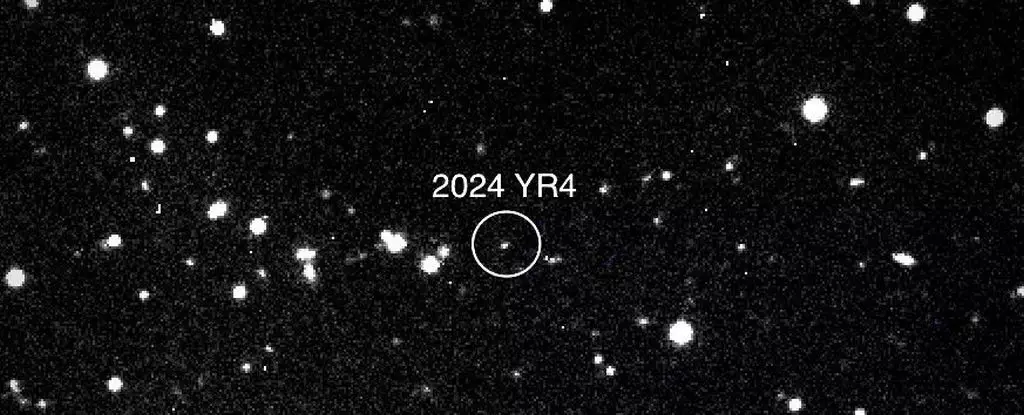Remember the collective anxiety that swept through the scientific community upon the discovery of asteroid 2024 YR4? It was only a brief moment ago when this celestial object, taking a joyride through the solar system, had the world holding its breath. Fast forward to today, and while the imminent threat to Earth has receded—collisions now deemed nearly impossible at a 0.001 percent probability—it’s a reminder of our vulnerability in the vastness of space. The asteroid, which was uncovered in December 2024, had ignited a wildfire of concern over its close approach in 2032. Although current assessments assure us that Earth is safe, another player remains in the game — our very own Moon.
A Blip on the Radar: Impact Probability and Its Implications
Gazing across space, the unassuming 2024 YR4 continues to orbit the Sun, making its presence known. Notably, researchers led by Andrew Rivkin at Johns Hopkins University have confirmed that while the asteroid poses no threat to Earth, it still has a slim, but notable chance of colliding with the Moon. What’s the big deal, you might wonder? The Moon isn’t our primary concern, yet any significant impact on it could indirectly affect Earth’s conditions and tides. Therefore, even a small possibility of collision warrants attention.
The frustration lies in our uncertainty. We need to ascertain not just the likelihood of impact but its potential consequences as well. The next set of observations planned with the James Webb Space Telescope (JWST) in May 2025 could crystallize our understanding. But until then, the ambiguity leaves us in a precarious position, precariously perched on the edge of cosmic uncertainty.
The Science Behind the Facade
What do we really know about 2024 YR4? Initially dismissed as a mere rock floating through space, it quickly became an object of intense scrutiny. Measuring approximately 60 meters across, any collision with Earth would yield catastrophic ramifications. For reference, a potential impact could unleash an energy equivalent ranging from 2 to 30 megatons of TNT—a magnitude that evokes fear and disbelief. To put this in perspective, the catastrophically powerful Tunguska event in 1908 is estimated to have exploded with the force of 15 megatons. What does it mean to sit passively while such urban legends play out in our celestial backyard?
Astrophysicists, now in a race against time, must further investigate 2024 YR4’s surface composition, focusing on its reflectivity and potential rocky nature. Misinterpretations can pose severe risks, and understanding whether this asteroid harbors metallic or stony materials is crucial for predicting its behavior. Each moment we spend underestimating or ignoring such asteroids is a moment of denial about the fragility of our existence.
The Nonchalance Towards Cosmic Risks
In an age where we’ve reached Mars and are charting plans for interstellar travel, it seems peculiarly naive to shrug off the dangers that a rogue asteroid might present. Our planets, Earth included, are at the mercy of the universe, and the indifference towards such asteroids symbolizes our broader societal attitude towards pressing global concerns. Just as climate change challenges our immediate environment, the threat of space debris further illuminates our dire need for collective action and foresight.
What do we stand to gain by continuing down this reckless path? Is it worth it to risk our future, not just for ourselves but for the generations to come? Ignorance cloaked in nonchalance limits how effectively we manage threats from within our solar system and beyond. Rather than simply monitoring 2024 YR4’s trajectory, we should spearhead initiatives to understand and communicate these risks more effectively, thus fostering a culture of awareness rather than complacency.
The Call to Action: Knowledge is Power
Seemingly small threats like asteroid 2024 YR4 remind us of the larger cosmic game at play. It is critical that we invest in technology and research to better equip ourselves against these forces. The forthcoming observations might be just scratches on the surface of a much more extensive investigation. The scientific community’s ongoing dialogue about the asteroid, however understated it may be, needs public engagement; the onus lies on us to bridge the gap between knowledge and action. We should challenge ourselves to elevate the conversation and recognize that understanding these cosmic challenges is not merely about mathematics or technology. It’s about the survival of humanity as we know it.


Leave a Reply